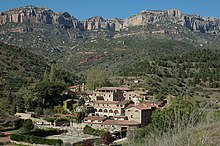
The Carthusians, also known as the Order of Carthusians, are a Latin enclosed religious order of the Catholic Church. The order was founded by Bruno of Cologne in 1084 and includes both monks and nuns. The order has its own rule, called the Statutes, and their life combines both eremitical and cenobitic monasticism. The motto of the Carthusians is Stat crux dum volvitur orbis, Latin for "The Cross is steady while the world turns". The Carthusians retain a unique form of liturgy known as the Carthusian Rite.

Alfonso II, called the Chaste or the Troubadour, was the King of Aragon and, as Alfons I, the Count of Barcelona from 1164 until his death. The eldest son of Count Ramon Berenguer IV of Barcelona and Queen Petronilla of Aragon, he was the first King of Aragon who was also Count of Barcelona. He was also Count of Provence, which he secured from Douce II and her would-be father-in-law Raymond V, Count of Toulouse, from 1166 until 1173, when he ceded it to his brother, Ramon Berenguer III. His reign has been characterised by nationalistic and nostalgic Catalan historians as l'engrandiment occitànic or "the Pyrenean unity": a great scheme to unite various lands on both sides of the Pyrenees under the rule of the House of Barcelona.

Priorat is a comarca (county) in Camp de Tarragona, Catalonia, Spain. The region is named due to the monastery of Scala Dei which held many properties and the capital is now the town of Falset.
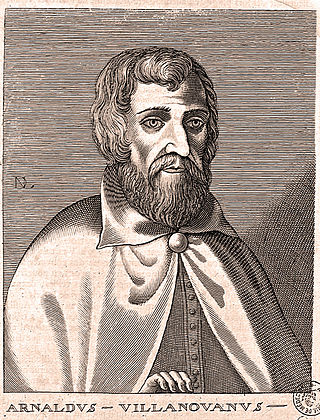
Arnaldus de Villa Nova was a physician and a religious reformer.

Cornudella de Montsant is a municipality in the comarca of the Priorat in Catalonia, Spain. It is situated in the north-west of the comarca below the Montsant range and the Prades Mountains. The Siurana reservoir is on the territory of the municipality and supplies its drinking water.
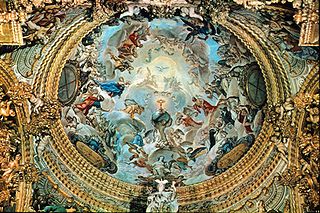
Granada Charterhouse is a Carthusian monastery in Granada, Spain. It is one of the finest examples of Spanish Baroque architecture.

Priorat is a Denominació d'Origen Qualificada (DOQ) for Catalan wines produced in the Priorat county, in the province of Tarragona, in the southwest of Catalonia.
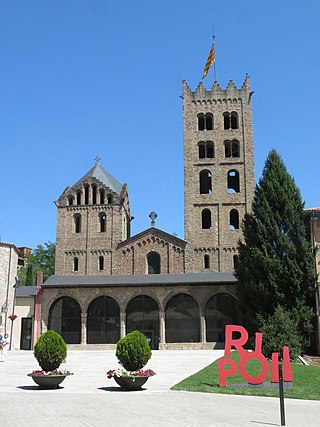
The Monastery of Santa Maria de Ripoll is a Benedictine monastery, built in the Romanesque style, located in the town of Ripoll in Catalonia, Spain. Although much of the present church is 19th century rebuilding, the sculptured portico is a renowned work of Romanesque art.

Catalan wines are those that are produced in the wine regions of Catalonia. Occasionally, the appellation is applied to some French wine made in the Catalan region of Roussillon and neighboring areas, also known as Northern Catalonia or the Pays catalans. The city of Barcelona is the capital of Catalonia and despite not being in a wine region, it is the focal point of the Catalan wine industry: a primary consumer market, its port provides export functions and a source of financial resources and investment. The Penedès is the largest wine-making region in Catalonia.

Žiče Charterhouse, also Seiz Charterhouse, was a Carthusian monastery or Charterhouse in the narrow valley of Žičnica Creek, also known as Saint John the Baptist Valley after the church dedicated to St. John the Baptist at the monastery near the village of Žiče and at settlement Špitalič pri Slovenskih Konjicah in the Municipality of Slovenske Konjice in northeastern Slovenia.

La Valsainte Charterhouse or La Valsainte situated in La Valsainte in the district of Gruyère, Canton of Fribourg, is the only remaining extant Carthusian monastery in Switzerland.

The Valldemossa Charterhouse is a palace in Valldemossa, Mallorca that was royal residence of the king Sancho of Majorca and later Royal Charterhouse of the Carthusians.

Sant Pere de Galligants is Benedictine abbey in Girona, Catalonia. Since 1857, it is home to the Archaeology Museum of Catalonia venue in the city. The name translates to English as "Saint Peter of Galligants", where Galligants refers to the River Galligants that runs past the abby.
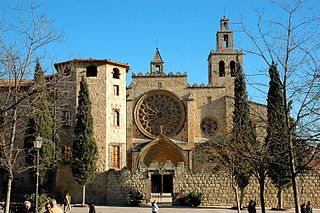
The Monastery of Sant Cugat is a Benedictine abbey in Sant Cugat del Vallès, Catalonia, Spain. Founded in the ninth century, and under construction until the 14th century, it was the most important monastery in the county of Barcelona. Its most notable architectural feature is its large Romanesque cloister.

La Morera de Montsant is a village in the province of Tarragona and autonomous community of Catalonia, Spain.

John of Aragon was a prince of Aragon. He was the son of James II of Aragon and his second wife Blanche of Anjou. He was archbishop of Toledo from 1319 until 1328. He became archbishop of Tarragona in 1327 and Latin Patriarch of Alexandria in 1328, holding both posts until his death.

Kinalehin Friary, originally a medieval charterhouse or Carthusian monastery and later a Franciscan friary, is a National Monument located in County Galway, Ireland.
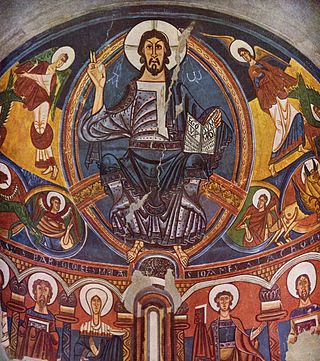
The Catalan art is the artistic production made in what is now Catalonia along the time. It has a parallel evolution to the rest of European art, following in a diverse way the multiple tendencies that have taken place in the context of the history of Western art. Throughout history, Catalonia has seen diverse cultures and civilizations that contributed their concept of art and have left their legacy. Each historical period has specific and definable characteristics, common to other lands and cultures, or unique and differentiated, which evolved over time.

Joaquim Juncosa was a Spanish Baroque painter and monk of the Carthusian order at the monastery of Scala Dei.

Molsheim Charterhouse is a former monastery of the Carthusian order, or charterhouse, located in the heart of the town of Molsheim, in the Lower Rhine region of Alsace. It now houses the Musée de la Chartreuse.



